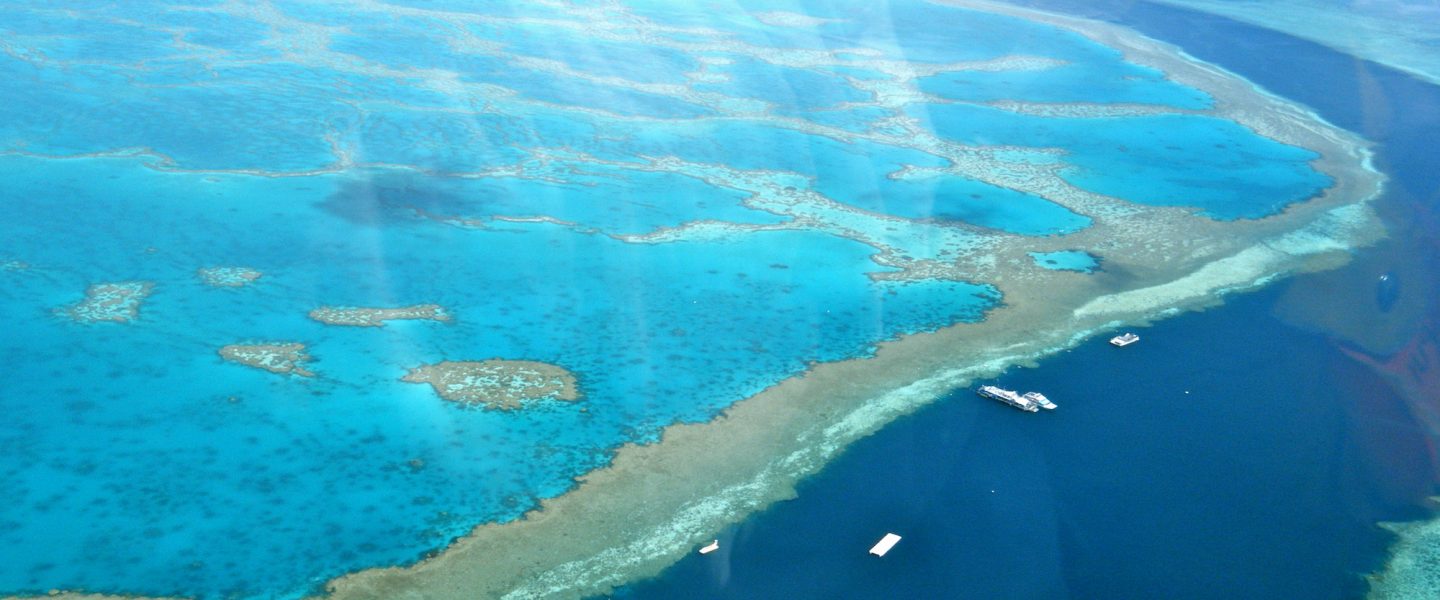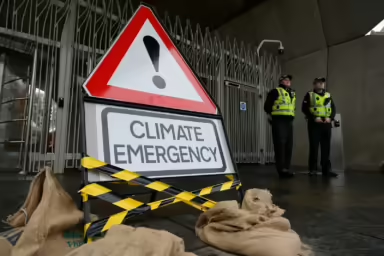Underwater sculptures are becoming a trend on degraded reefs. Are they helping the reef recover or are they just a tourism draw?
|
Listen To This Story
|
In March 2017, Tropical Cyclone Debbie whipped through the Whitsundays region of Queensland, Australia. The sheer force of the storm ripped out large swaths of corals from the Great Barrier Reef, leaving thick blankets of sediment in their place. The natural disaster cost the Whitsundays tourism industry $83–$125 million.
“The snorkelers didn’t want to get in the water. It was pretty horrific,” says Adam Smith, managing director of Reef Ecologic, a company that advises and develops coral reef management solutions. “Not much coral, not much to see. They were happy to walk on the islands, but no one was comfortable with the devastation Cyclone Debbie had caused.”
As a young marine biologist, Smith was optimistic that the reef could bounce back from whatever was thrown at it. But these days, he is more focused on doing what he can to look after it. “I’ve got a different view,” says Smith. “The marine environment and my precious Great Barrier Reef is big, but it’s also quite fragile, and we have to have a different relationship to it.”
The year after Tropical Cyclone Debbie, in a bid to get people back on the reef and more involved in helping it recover, Smith and his team at Reef Ecologic launched the Whitsundays Reef Recovery and Public Art Project. Funded by the Australian government’s $5 million Whitsundays tourism recovery package, the project included installing a series of underwater sculptures on damaged sections of the reef.
The installations consisted of four marine-themed sculptures made by local artist Adriaan Vanderlugt: a limestone nudibranch, an aluminum soldier crab, an aluminum boxfish, and another boxfish made from marble. Additionally, Reef Ecologic worked with tourism operators, volunteers, and citizen scientists to establish coral nurseries to help bring the cyclone-damaged reef back to life.
As a trial, the researchers placed the sculptures on a reef off Langford Island, a popular snorkeling spot in the northwestern corner of the Whitsundays. They moved the sculptures between three different locations each month: land, intertidal, and underwater.
Smith and his team surveyed tourists about their views — then compared their results to similar data collected between 2013 and 2017, the year Debbie hit. The results were intriguing. As it turns out, while tourists weren’t impressed with the reef after it had been smashed by the cyclone, they seemed to view it in a more favorable light after the sculptures made their debut.
Yolanda Lee Waters, a doctoral candidate in marine social science at the Queensland University of Technology, isn’t so sure that sculptures can raise awareness about the marine environment — or that they are even particularly appealing to tourists. Instead, she suggests, visitors may have seemed jazzed about the sculpture-laden reef because their expectations had hit an all-time low after years of coral bleaching, she says.
“I’m not convinced that people do enjoy [the sculptures] better than the reef itself,” says Waters, who was not involved in the research. “Satisfaction is going up because they don’t have to see much to go, Wow, it’s not all dead or dying.”
The researchers asked more than 400 tourists and locals if they thought underwater art installations were a good idea, with 70 percent agreeing that sculptures could help kick-start tourism and even help restore damaged reefs to their former glory, such as by providing new — albeit artificial — structures where corals could grow.
Tourists were keener on the idea of sculptures than residents, but only if their theme was tied to the marine environment. “People were very happy to have something innovative like underwater art, provided it was linked to improved education or telling stories of the reef,” says Smith. “They didn’t want art that was out of place.” Tourists also said they were more likely to visit the reef if it had art installations.
The next year, in 2019, Reef Ecologic installed six permanent sculptures on various reefs in the Whitsundays, including a giant stainless steel turtle and a group of manta rays. According to Smith’s monitoring, the diversity and abundance of fish has increased near the sculptures over the past three years. Reef Ecologic also launched a citizen science database where divers and snorkelers can share their marine life observations.
But can underwater art installations really make a difference? Waters remains skeptical. For any public engagement tool to be effective, it needs to have an end goal that’s clear from start to finish, such as convincing people to support research activities on the reef, she says. “Everyone raises awareness, but what does that mean?” says Waters.
This story by Gemma Conroy originally appeared in Hakai Magazine and is republished here as part of Covering Climate Now, a global journalism collaboration strengthening coverage of the climate story.




